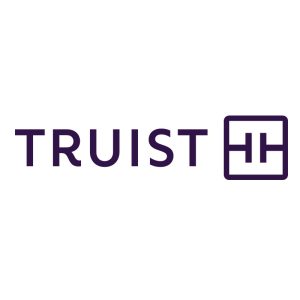The Truist Leadership Institute has dedicated more than a decade to researching and measuring the effect of engagement on workplace performance. Don Geletko, Senior Leadership and Business Advisor, and Jeremy Spidell, Director of Client Engagement at Truist Leadership Institute, share how building a more engaged workforce is especially important when conditions in the industry and overall economy are changing.
Automotive dealers are experiencing changes and challenges on many fronts. On the labor front, record-high numbers of workers have quit their jobs in recent years in search of better opportunities, better pay and better benefits. Dealerships need to continue attracting and retaining talented workers while providing them with the technical and management skills they need to succeed. The industry’s shift toward digital buying and the continued expansion to electric vehicles only add to the new skillsets that dealers will require in the future.
In this challenging environment, it’s more important than ever that dealers focus on recruiting quality candidates, retaining key performers and developing workers’ talents. Building engagement with your employees and their teams is a key element in making this effort a success.
What Makes Engagement So Important?
Research shows that engaged employees are dedicated, enthusiastic, immersed, passionate and proactive. And when it comes to working hard, they go above and beyond. Plus engaged workers are often more resilient and respond better to the stress of change, whether in the workplace or in the world beyond.

Engagement doesn’t just happen. It is usually the result of an intentional strategy. Dealers can raise workers’ engagement levels by focusing on the six drivers of engagement:
- Connectedness
- Importance
- Control
- Competence
- Clarity
- Fairness
While each driver has its role, they’re all interrelated and additive — getting the engagement you want comes from working on all six in concert. Learn more about each one and the actions you can take to keep your dealership team engaged.
- Connectedness: “I belong.”
Connected employees know they are part of a team. They trust the people they work with and feel supported by managers and company leadership. Their managers value their abilities, strive to provide what’s needed to grow and develop their skills and trust them to successfully perform their jobs.Research shows that employees’ perception of a company’s executive leadership has roughly the same impact on engagement as their perception of an immediate manager.
As a leader, staying connected means listening and being tuned in to what workers need while providing clear guidance on their job goals and honest feedback on their performance.
Action: Stay visible to employees through meetings, social gatherings, email and dealership visits. Make a point of connecting with employees even when there’s nothing new to report.
- Importance: “My work is meaningful.”
Employees who find meaning in their work are more engaged. They understand how their job has a positive impact on people’s lives, and they can see where their contributions support your dealership’s goals and purpose.
The sales you make and the service your dealership provides allow your customers access to the fundamental need of transportation — getting people to work, helping them get their kids to school, enabling them to go shopping and providing a means for people to socialize. For many dealerships, this is the core component of their purpose, the core reason for being and the source of their positive impact on the world. One southeast dealer regularly reminds his team, “We’re not just selling someone a car. We’re actually helping improve how they live.”Engaged employees find merit in the work they do and look to align their work values with their personal values. Demonstrating your business’s purpose and framing the way your dealership does business in terms of its meaning to your community allows employees to see your values in action and embrace them.
Action: Elevate your dealership’s purpose and its goals. Make them visible and communicate them often through internal meetings and informal one-on-one discussions and externally in social media, in the press and in your marketing and online presence.
- Control: “I have a choice.”
Engaged employees need the right amount of control and autonomy to understand the work that needs to be done, have the independence to do it the way they see fit, and have the responsibility to do it correctly. Control that leads to success builds confident employees who can take on more, including charting their career path to places they feel most comfortable going and where they can excel.
For managers, the trick is to find the right amount of control that each person needs and seek each employee’s input on decisions that affect them. Employees who have more control tend to be more open about any obstacles they’re facing and that leaves them more willing to come up with solutions rather than waiting to be told what to do. And when it comes to team settings, employees who feel they have more control over their work can perform with less contention over job boundaries and roles.Action: Match the right person to the right job, give them control to perform and set clear expectations for success and accountability.
- Competence: “I am capable. I am the right person for the job.”
Engaged employees should be well-suited for the job they are assigned and have the skills and talents needed to meet challenges and complete their work. Carefully matching workers to the right jobs helps them get satisfaction from doing what they do best.
Be clear about opportunities for growth and skill development and give employees input into crafting their job. Could the job be better structured to align with their strengths? Are there strategies to move the job in that direction?Managers with a growth mindset understand that mistakes happen when trying something new, and they let employees learn and grow from those missteps. That may often mean reframing mistakes as challenges to be overcome and growth opportunities to be gained.
Action: Excellence at matching worker talents with task requirements should be a core skill for you and your management team. Make learning and employee growth a priority. - Clarity: “I know where I stand.”
Engaged employees know the “why” behind decisions made and understand the contributions they must make to help the team reach its goals. This is especially important in unsettled times, when workers may wonder if they’ll still have a job and are struggling to see the big picture.Leadership and managers who communicate honestly and regularly about the challenges the business is facing and how the dealership plans to adapt and respond can reduce uncertainty and resulting anxiety. If there’s nothing new to report, say that, and let your staff know that when there’s news, they’ll hear it from you first.
You can use the time to ask for ideas and solutions from your workforce. You may come up with solid input from employees who know your business and see things you don’t. Plus, you’ll show them you’re listening and reinforce the value they bring in helping your dealership devise answers and succeed. Employees will feel a measure of control, even when conditions are unsettled.
Action: Communicate clearly and honestly about the challenges your business faces and your plans to address them. Solicit input from employees who know the business and are dedicated — like you — to its success.
- Fairness: “I am treated with respect.”
Employees feel respected when the workload is evenly distributed and their work is compensated fairly, yet there can often be different perceptions among leaders, managers, employees, and their peers about whether those two conditions are met. Discussions around assignments and compensation can be some of the trickiest to conduct, and confrontation-adverse leaders who shy away from these communications usually find that issues fester and grow.
Managers who are attentive to balanced assignments and appropriate pay stay ahead of situations by informing employees about why decisions were made and when — or if — they expect things to change. If there’s a path to increase employee pay with greater contributions to the business, help them understand what they need to do and when they can expect to be rewarded.Action: Pay close attention to work/pay alignment and communicate about it openly, broadly and frequently.
Truist Bank, Member FDIC. ©2023 Truist Financial Corporation. Equal Housing Lender.
Ready to start your journey to greater organizational engagement?
There are many elements to increasing engagement. The Truist Leadership Institute team can help you identify where you are in the journey, accurately measure the gaps that you can address, and advise you on actions to take to develop a highly engaged workforce.
1Moore, C.J., The pandemic exposed what dealership employees value, Automotive News, October 17, 2022.










